Playing board games is one of the best ways to spend time with your children. Why? Board games offer ample ways for kids to build their brains. Not only does playing games with your children improve family relationships and give opportunities for caring adults to help nurture good sportsmanship but the best games build kids' critical thinking and problem solving skills.
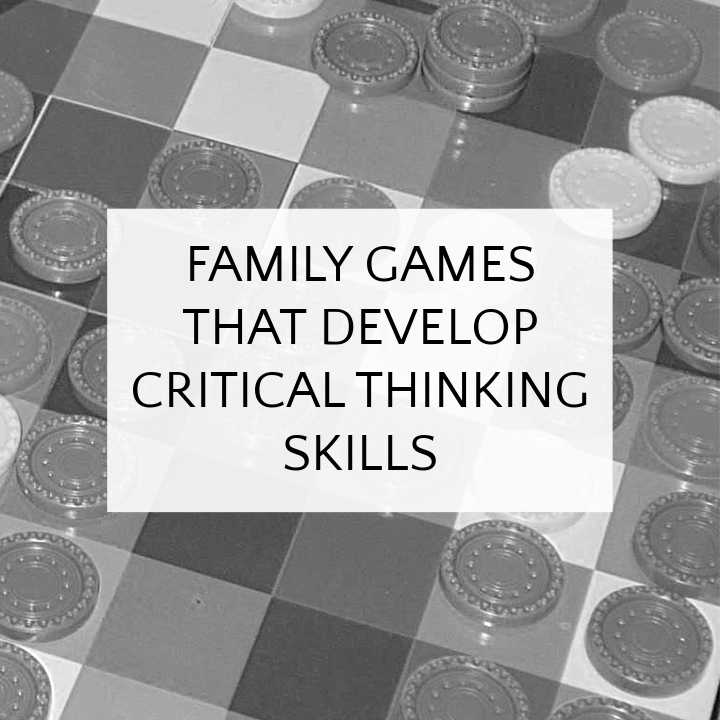
Note: this post contains affiliate links that may earn commission.
We've composed a list of problem solving games for kids that help develop the following critical skills:
- Advance planning - what steps do you need to make in order to reach your goal?
- Decision making - evaluating the benefits of multiple choices
- Drawing conclusions and inference - how will your opponent respond to your choice?
- Reevaluation - how you respond when the result is unexpected
Games work on all these skills while also being fun. What could be better? Here are our favorite 10 problem solving games for kids and families!
A note regarding age recommendations. I've included the manufacturer's recommendation, but most games can be played with younger kids, provided an adult is at the ready to assist.
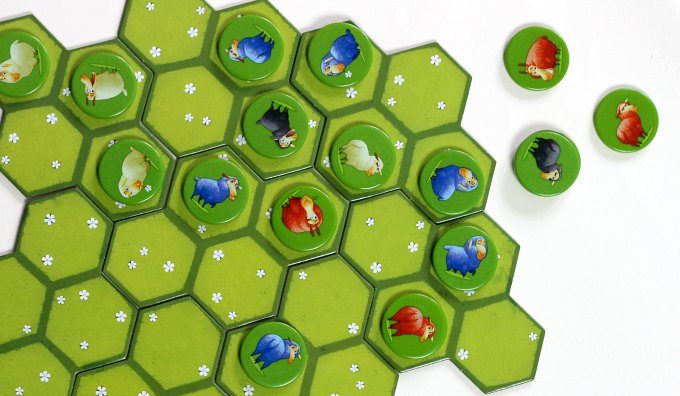
BATTLE SHEEP
Every time you play Battle Sheep the playing space is different! That's because players start with 4 pasture boards that they take turns placing down to create the playing field. Kids are using advance planning and reevaluation right off the bat! Each player begins with 16 sheep and aims towards occupying as many pastures as they can. Players must chose between placing sheep or strategically blocking their opponents. We love this game that engages players' abstract thinking, strategic, and visual perception skills. Ages 7 and up. 2-4 players.
Find it: Amazon
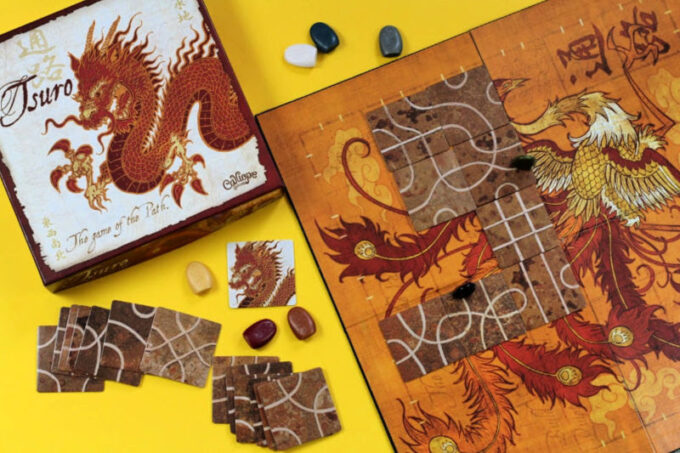
TSURO
The board changes every time you play, keeping players on their toes and constantly reassessing their strategy. Players use tiles to create paths along which they move their tokens. The objective is to create paths in such a way that keep you moving but force your opponents off the board. Players must anticipate other's moves and problem solve in order accomplish both goals. Tsuro is also surprisingly easy to learn! Ages 8 and up. 2-8 players.
Find it: Amazon
MORE: Our favorite tile-based games

LABYRINTH
Players make their way through an ever-shifting maze in pursuit of treasure. Each player begins with a set number of treasure cards and the player who collects all their treasure first, wins. The board consists of moving panels and on their turn, a player shifts the panels in an effort to further their own progress or hinder that of others. Ages 7 and up. 2-4 players
Find it: Amazon
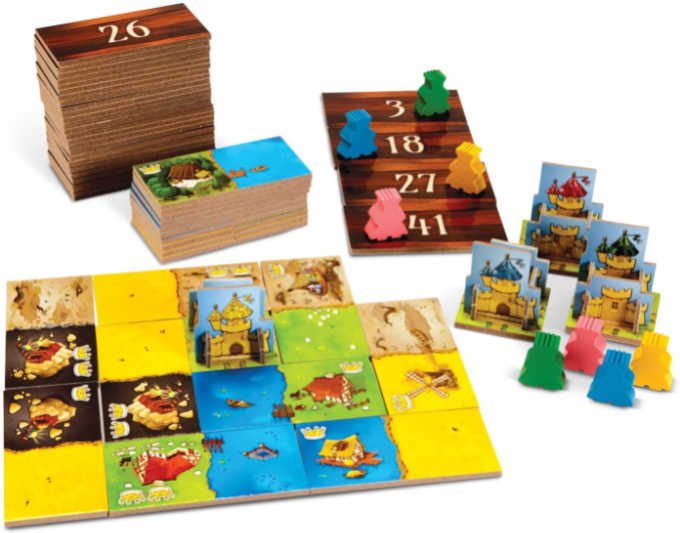
KINGDOMINO
Kingdomino is a tile placing game in which players must make choices regarding how to build their kingdom. The objective of the game is to score as many points as possible by matching tiles based on terrain. But some terrains score more than others. Players must decide if they want to build a lot of low scoring terrains, or fewer high-scoring terrains. Your tile choice also affects the order of play for the next round so it's important to be thoughtful. We've throughly enjoyed this game. An expansion pack is available. Ages 8 and up. 2-4 players
Find it: Kingdomino | Expansion pack |Queendomino

PHOTOSYNTHESIS
Photosynthesis from Blue Orange Games has an environmental theme. Players focus on growing trees through their life cycle from seed to maturity. Players strategize to "plant" their seeds where they will receive the most light, without being blocked in the future by other, maturing, trees. Successful game play requires planning and analysis. The artwork is beautiful and adds to the unique game play. We have enjoyed playing this game! Ages 8 and up. 2-4 players.
Find it: Amazon
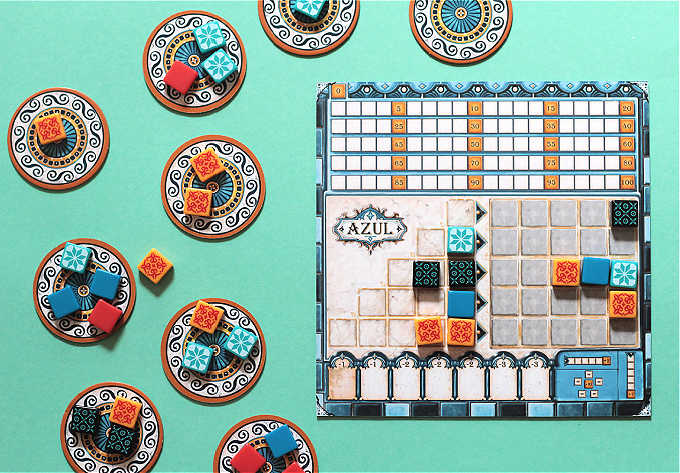
AZUL
Azul's stunningly colorful game design was inspired by azulejos, a type of decorated ceramic tile introduced to Spain by the Moors and made popular in Portugal by King Manuel I. Players transform into tile laying artists, and must strategize over three phases of game play: choosing tiles, laying them and prepping for the next round. The object is to collect the most points by creating lines of 5 consecutive tiles. Each line of tiles must contain only one of each type of tile. The game ends when one player has completed a row, but that player is not necessarily the winner. Strategic problem solving and planning are required because players can lose points in the wall-tiling phase for any remaining, unused tiles. Ages 8 and up. 2-4 players.
Find it: Amazon
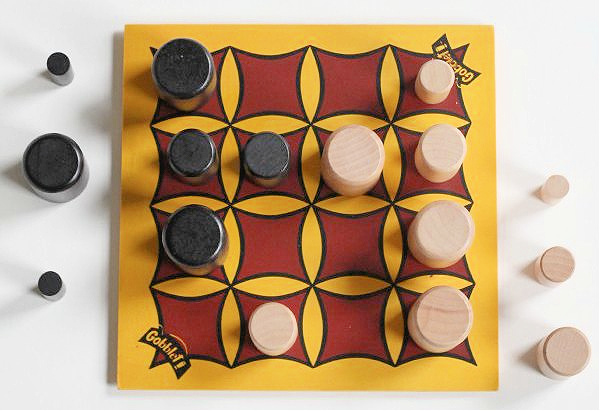
GOBBLET
Gobblet looks like Tic Tac Toe but players have large, medium and small pieces that nestle inside each other like Russian dolls. Players attempt to get four in a row by "gobbling" up smaller pieces. The game relies on advance planning, anticipating your opponent's moves and memory skills since you have to remember which Gobblets have been gobbled without peeking! Ages 7 and up. 2 players. A version for ages 5 and up is available as Gobblet Gobblers.
Find it: Gobblet | Gobblet Gobblers
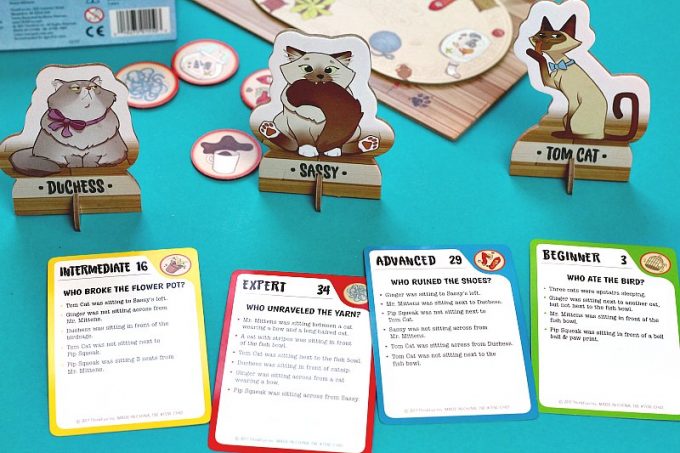
LOGIC GAMES
Logic games are the ultimate problem solving entertainment! We love single player logic games and probably own an unhealthy number of these brain boosting puzzle games.
The following are some of our top favorites:
- Cat Crimes, ages 8 and up (pictured above) - see it as our game of the month feature
- Code Master, ages 8 and up - see it as our game of the month feature
- Castle Logix, ages 3 and up - see it as our game of the month feature
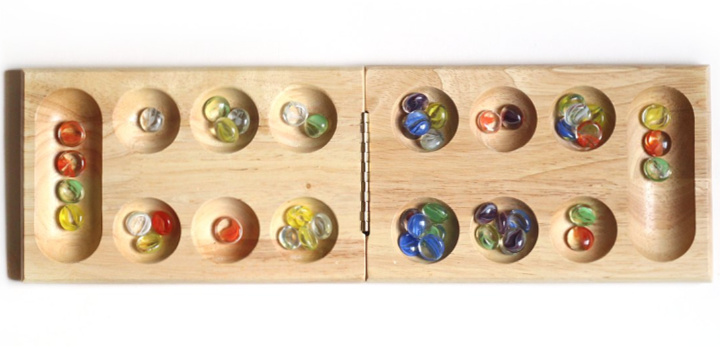
MANCALA
Mancala is a classic game every family should have. The board has two rows of depressions, plus end "home" bowls. The goal is to transfer the most stones from the rows into your home. A set of rules govern how you deposit and capture stones. You must use strategy to capture stones and ensure you do not leave them vulnerable to your opponent's greedy, greedy paws. Playing Mancala improves memory and observation skills. You must engage your strategic thinking skills to make sure you don't inadvertently give your opponent the opportunity to thwart you. Ages 8 and up. 2 players.
Find it: Amazon
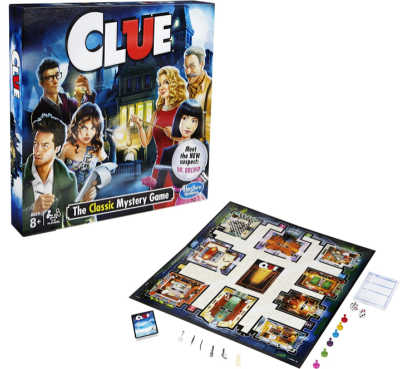
CLUE
Find it: Amazon
There's a reason the classic detective board game, Clue, remains so popular. I loved it when I was a kid and I bet you did, too. Players race to be the first person to solve the mystery of the who, what and where of a murder. Clue requires deductive reasoning and logic skills to narrow down the possibilities. Players must also vigilantly observe the actions of other players to help them make logical decisions. Ages 8 and up, 2-6 players (much better with 3 or more players).
MORE:



Leave a Reply